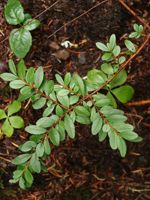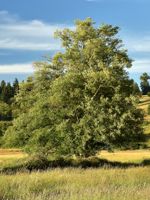Mon-Fri 9am - 5pm Mountain time
Falsebox vs Red Alder
Paxistima myrsinites
Alnus rubra
CUSTOM GROW
CUSTOM GROW
Falsebox is a hardy, native evergreen shrub found in forests, rocky slopes, and open woodland sites. Though small and easily overlooked among the leaves, the maroon flowers still supply nectar and pollen for pollinators such as native bees and flies. Blooming in spring, they provide an important early-season food source. Its year-round greenery adds visual interest through the winter.
Falsebox is a low-growing shrub that tolerates a wide range of conditions, including drought once established. It thrives particularly well beneath the shade of mature trees, where few other plants succeed. With its resilience and ecological value, Falsebox is well-suited for naturalization, restoration projects, and diverse landscape plantings.
Red Alder is a fast-growing deciduous tree native to western North America. Through its nitrogen-fixing roots and nitrogen-rich leaf litter, Red Alder improves soil fertility and supports the growth of surrounding plants. This makes it especially valuable on disturbed sites following logging, construction, or fire. A classic pioneer species, it often colonizes bare ground and enhances conditions for longer-lived conifers to follow.
Red Alder stabilizes soils on streambanks and disturbed slopes, reducing erosion and aiding restoration. It also supports wildlife: birds and small mammals eat the seeds and buds, deer and elk browse the foliage, and bees are drawn to the pollen-rich catkins in spring.
Red Alder also has commercial importance, with its strong yet workable wood widely used for furniture, cabinetry, veneer, and pulp. The tree takes its name from the rusty-red color the bark turns when cut or bruised.

